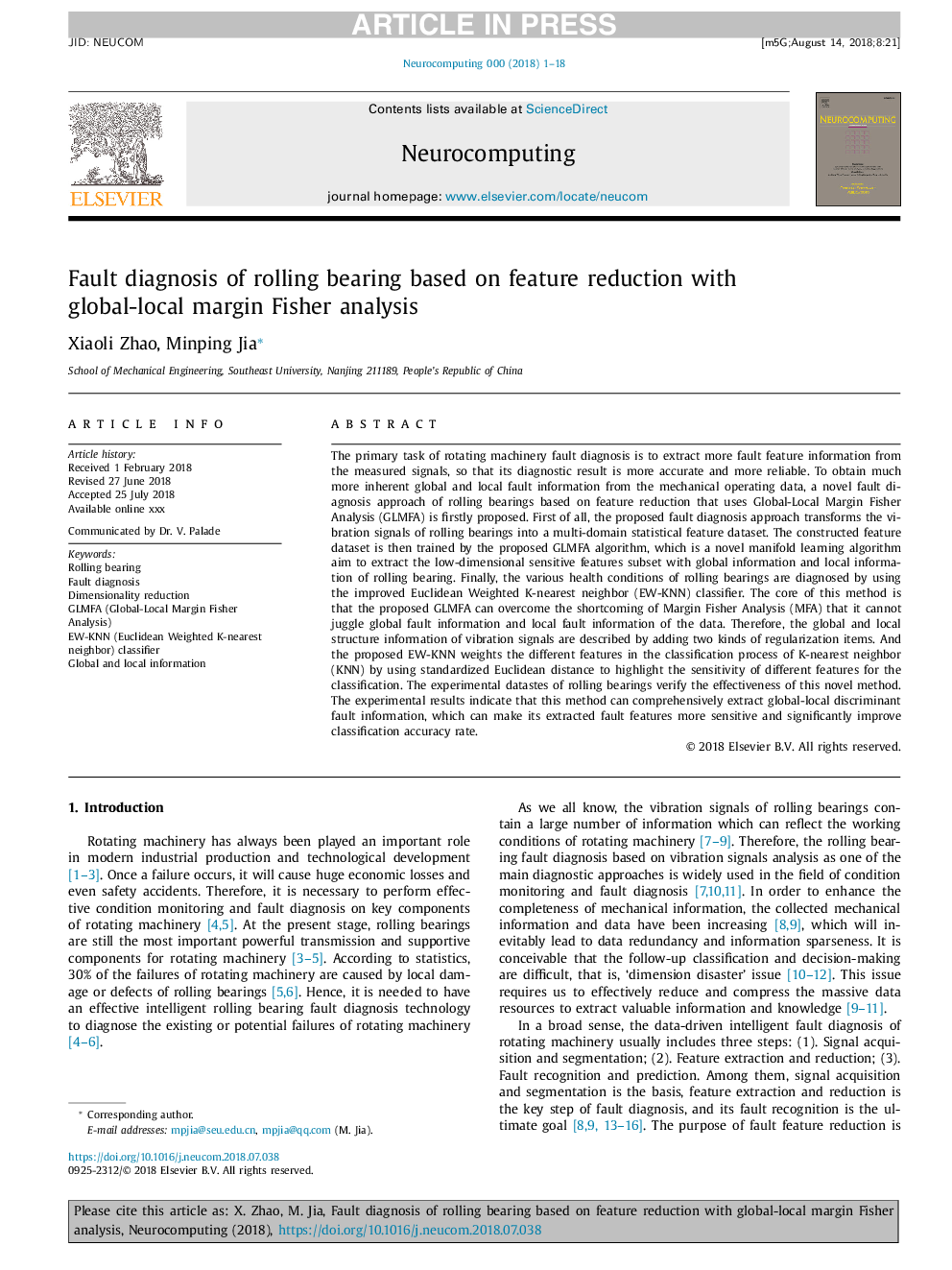| Article ID | Journal | Published Year | Pages | File Type |
|---|---|---|---|---|
| 10151214 | Neurocomputing | 2018 | 18 Pages |
Abstract
The primary task of rotating machinery fault diagnosis is to extract more fault feature information from the measured signals, so that its diagnostic result is more accurate and more reliable. To obtain much more inherent global and local fault information from the mechanical operating data, a novel fault diagnosis approach of rolling bearings based on feature reduction that uses Global-Local Margin Fisher Analysis (GLMFA) is firstly proposed. First of all, the proposed fault diagnosis approach transforms the vibration signals of rolling bearings into a multi-domain statistical feature dataset. The constructed feature dataset is then trained by the proposed GLMFA algorithm, which is a novel manifold learning algorithm aim to extract the low-dimensional sensitive features subset with global information and local information of rolling bearing. Finally, the various health conditions of rolling bearings are diagnosed by using the improved Euclidean Weighted K-nearest neighbor (EW-KNN) classifier. The core of this method is that the proposed GLMFA can overcome the shortcoming of Margin Fisher Analysis (MFA) that it cannot juggle global fault information and local fault information of the data. Therefore, the global and local structure information of vibration signals are described by adding two kinds of regularization items. And the proposed EW-KNN weights the different features in the classification process of K-nearest neighbor (KNN) by using standardized Euclidean distance to highlight the sensitivity of different features for the classification. The experimental datastes of rolling bearings verify the effectiveness of this novel method. The experimental results indicate that this method can comprehensively extract global-local discriminant fault information, which can make its extracted fault features more sensitive and significantly improve classification accuracy rate.
Related Topics
Physical Sciences and Engineering
Computer Science
Artificial Intelligence
Authors
Zhao Xiaoli, Minping Jia,
